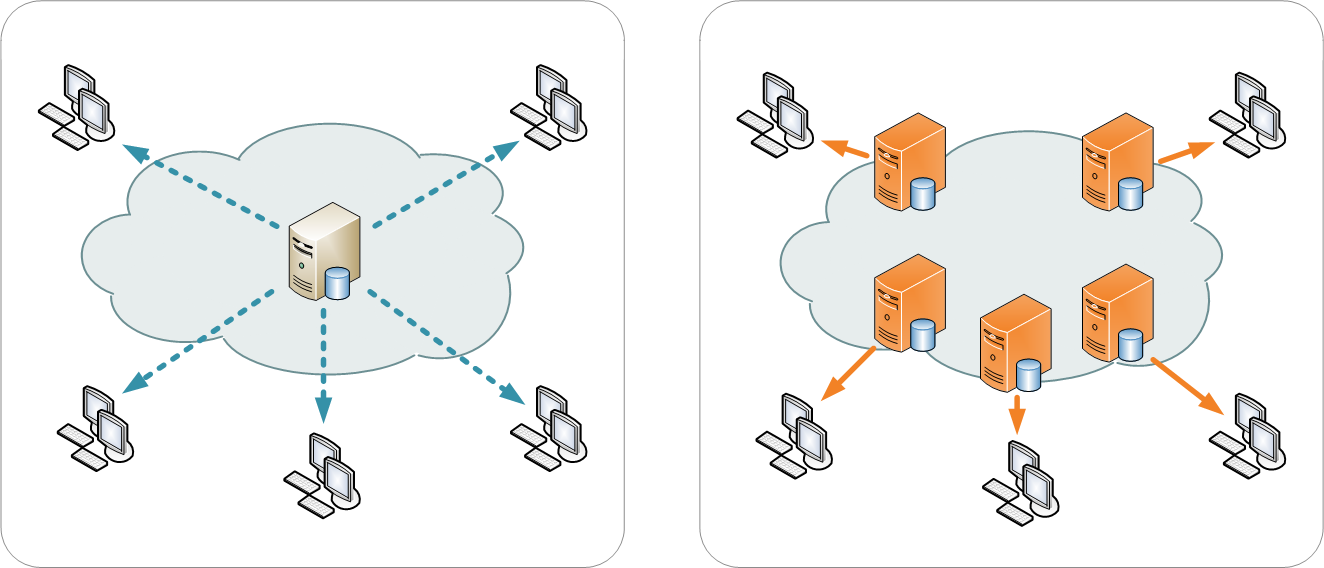Why the Future of Content Delivery Networks Is Interactive Experience

The emerging demands for high-quality internet videos have pushed content delivery network (CDN) providers to optimize their deployments and improve speed. However, the fast-forward digital world wants value-added products and flexible services. Content delivery networks need to evolve to develop rich interactive, two-way experiences to enhance user experience and ROI, explains Jerod Venema, CEO & co-founder of LiveSwitch.
For as long as there’s been an internet, consumers have wanted it to be faster. And while there have been countless breakthroughs in connection speed, mobile bandwidth, and device processing, few technologies are as crucial to the modern internet as content delivery networks. By caching huge amounts of content data all over the globe, content delivery networks load high-res video and images within seconds of a user clicking a link. We now consume content faster, easier, and in greater quantities than ever, mostly thanks to CDNs.
Now the problem: I could have written that paragraph in 1998 about the first CDNs. Yes, CDN technology is speedier and more secure than 20+ years ago, thanks to big CDN providers like Cloudflare, Amazon, and Verizon, but the current CDN model hasn’t really changed. It’s still providing faster loading for videos, still hosting disparate content from all kinds of sources in global clusters, and still presenting viewers with all they can consume on a screen. There’s nothing wrong with this, but we’re still acting like the speed of delivery is the only thing that matters.
Having content appear faster is good. But if we are only providing faster, higher-res video, images, and audio, CDNs are leaving a lot on the table when it comes to customer experience. It’s time for CDNs to start delivering interactive, two-way experiences, not just one-way content.
Why We Must Evolve CDNs Beyond the “Right Now” Model
Consumers do not like to be kept waiting. Whether they’re expecting a cheeseburger or a cloud service, “right now” is the default timeframe for delivery. This “right now” mandate is why content delivery networks are practically required for any website or app using streaming video, as only a CDN can deliver access to high-res video on any device and on any network. However, providing this no-wait service is neither inexpensive nor easy for CDN providers.
The traditional “right now” model for CDNs is effectively the same business model as McDonald’s—providing consumers fast, anywhere access to a predictable product as cheaply as possible. However, the margins are low, the product is uninspiring, and consumers are getting bored with the same old experience. If we don’t evolve this “right now” model for CDNs, we will continue a race to the bottom on who can most quickly and cheaply deliver boring digital content for passive consumption.
Instead of embracing the McDonald’s model, let’s set our sights higher. Consider how Starbucks approaches the customer experience. They’re still everywhere and provide fast service with a reliable product, but their customer experience offers layers of personalized interaction. Starbucks accepts higher margins to deliver better interactions with its customers: training baristas who can actively listen and make complex beverages on command, providing high-quality products that keep buyers coming back, and shaping a store experience where customers actively spend time instead of always grabbing drinks and leaving.
We are never going to reach the potential of content delivery network technology if we remain stuck in a “right now” model where the only goal is delivering more content faster. Instead, it’s time for us to enable a bi-directional streaming experience that embraces interaction between customers and content providers—transforming CDNs from passive consumption pipelines to virtual immersion technology.
Envisioning the Interactive Future of CDNs
My vision for the future of content delivery networks is delivering richer digital experiences driven by presence, connection, and interaction. Rather than simply watching a stream and posting comments, this interactive future of CDNs would enable viewers to actively influence a video stream as it happens. At LiveSwitch, I have talked to CDNs who want to provide this functionality, enabling an experience that’s like being in the front row of a live comedy performance where the performer does “crowd work”—asking the audience questions and crafting impromptu jokes based on their answers.
If you’re a CDN provider who’s currently delivering one-way broadcasts, there is so much more you could offer to provide engagement capabilities to your customers. Imagine offering interactive streaming of popular shows and movies that enable viewers to share the experience with any friend, anywhere. This could enable a picture-in-picture stream where viewers could see their friends’ reactions to exciting moments and hear their laughter at comic scenes. Embracing VR and AR technology can take this further by projecting a video image of your friend on the couch next to you as you both watch your favorite show.
On the gaming front, interactive streaming could enable Twitch streamers to hear the cheers and boos of their spectators instead of simply reading comments. Going deeper into the interactive future, spectators could also bid to place custom loot crates and obstacles inside the gaming environment. This could sway key moments in the digital competition or simply provide a good laugh for everyone watching. The result would be all the spectator/player interactivity of The Hunger Games—minus the dystopian future.
As we experiment with metaverse technology blurring our physical and virtual worlds, existing CDN providers can be the deliverers of this new experience. This CDN future can only be achieved by those who go beyond the basic acceleration of passive content in pursuit of a rich interactive experience that will capture audience attention and resonate in their memories long after.
